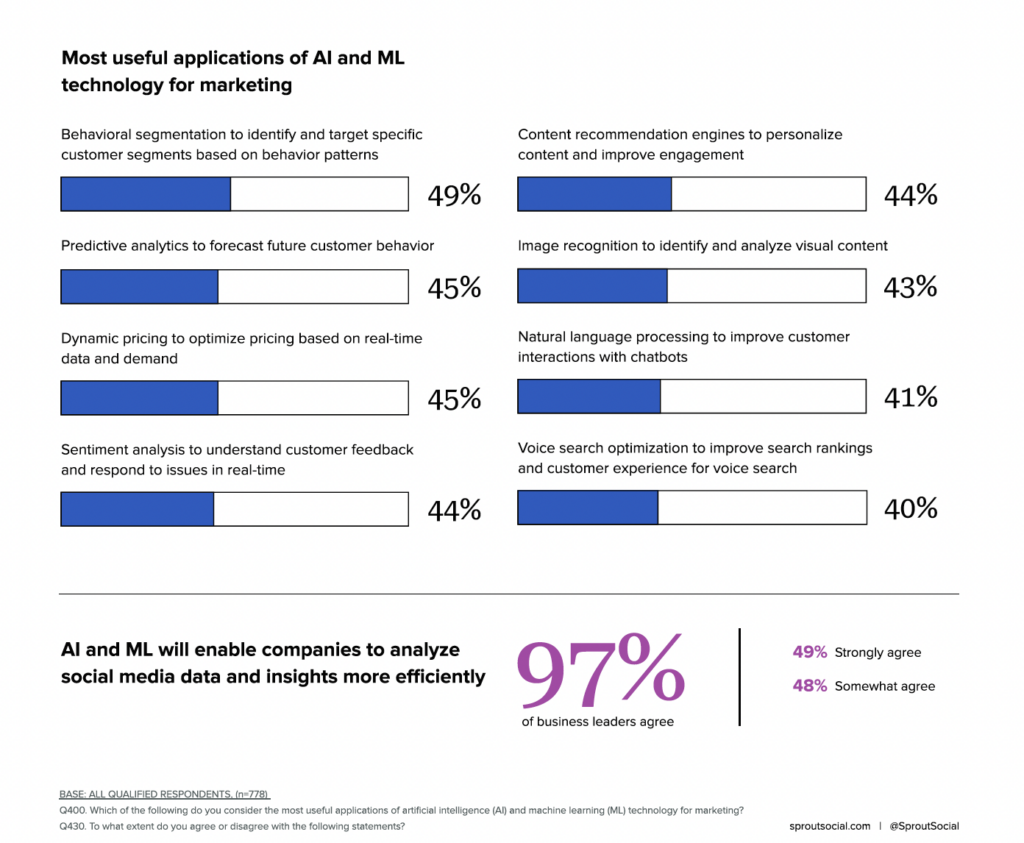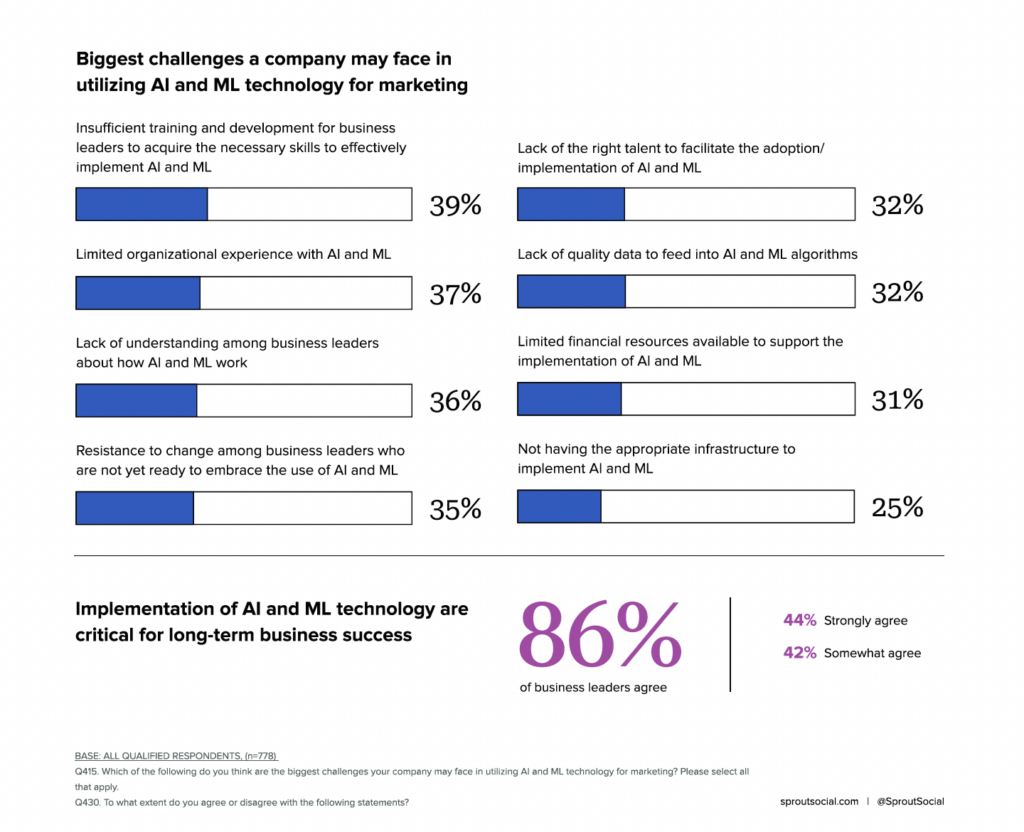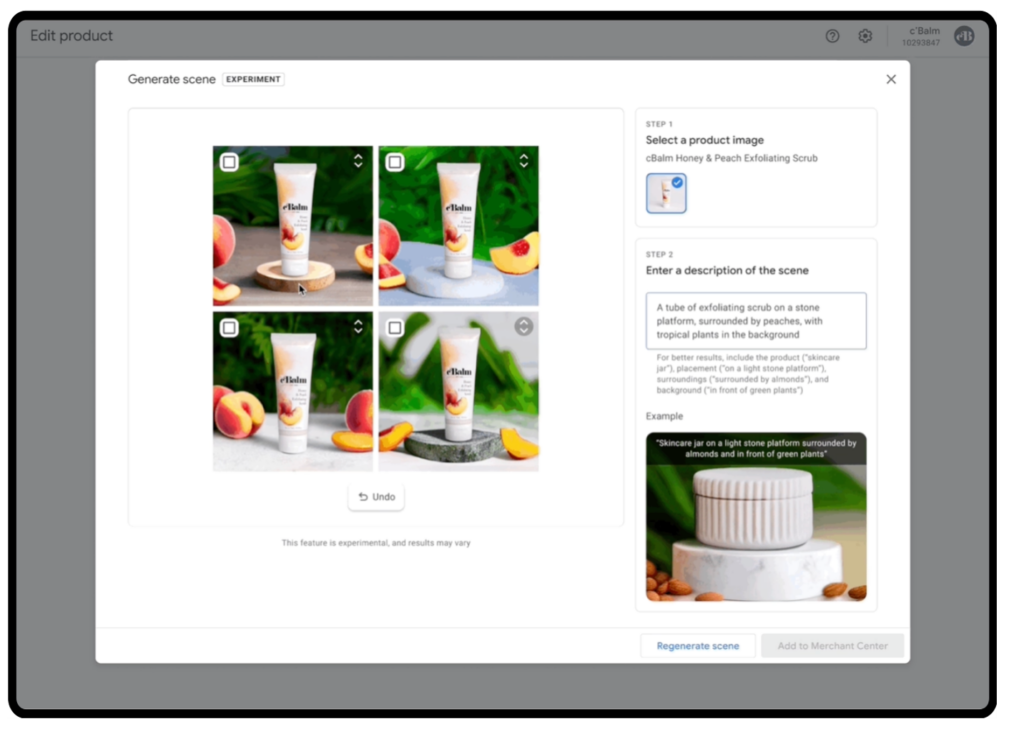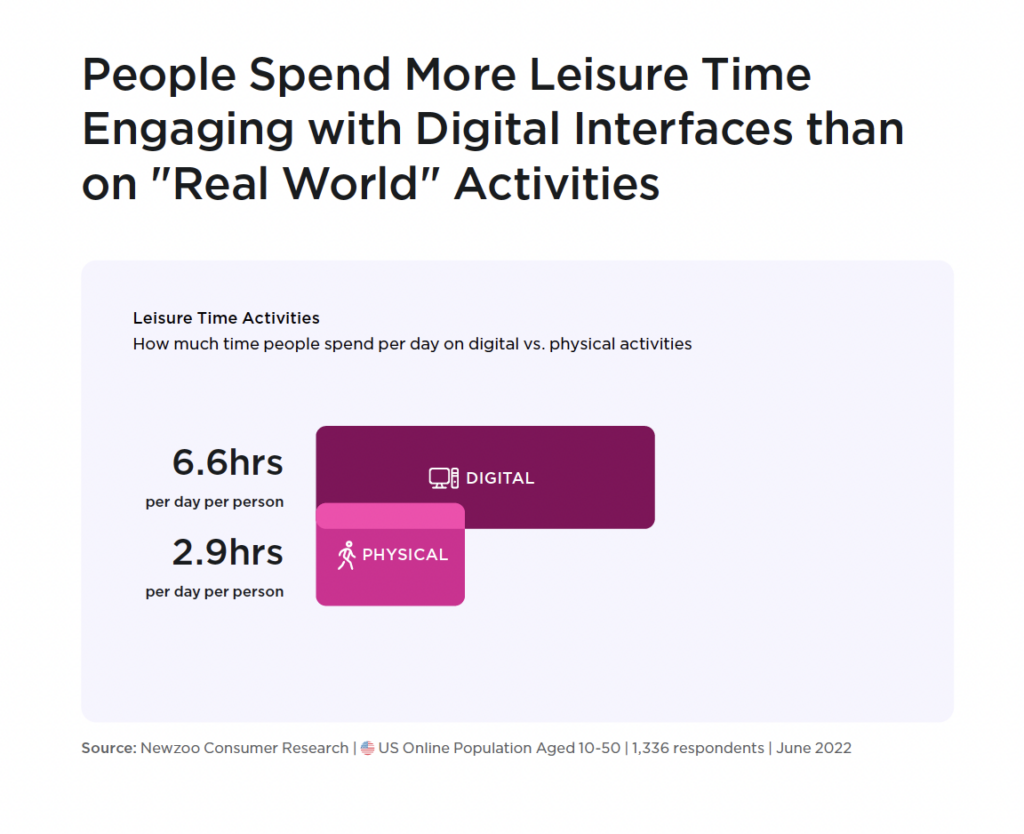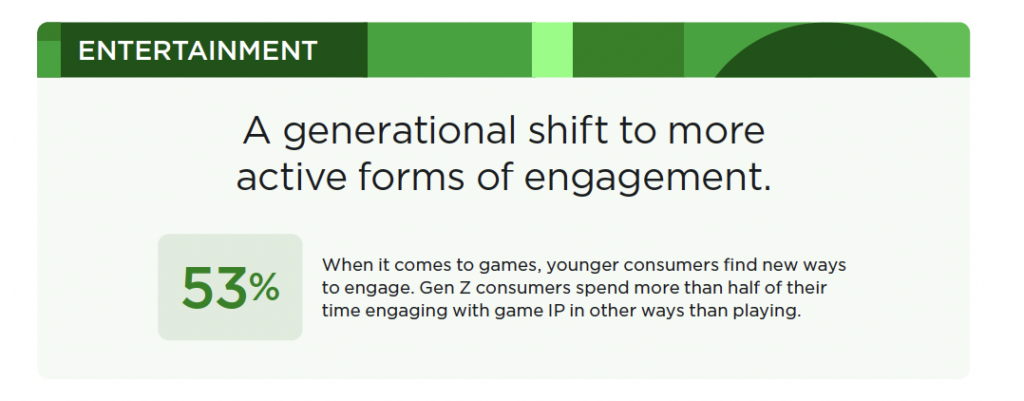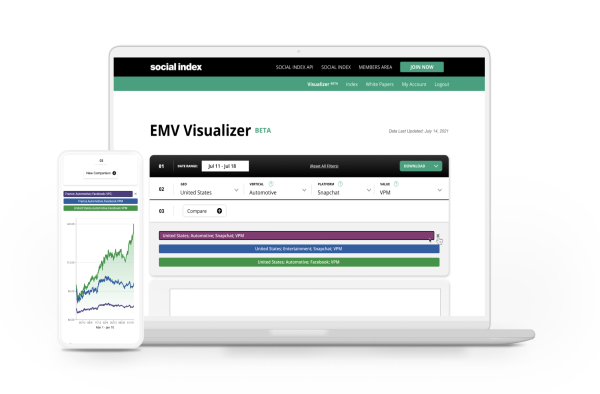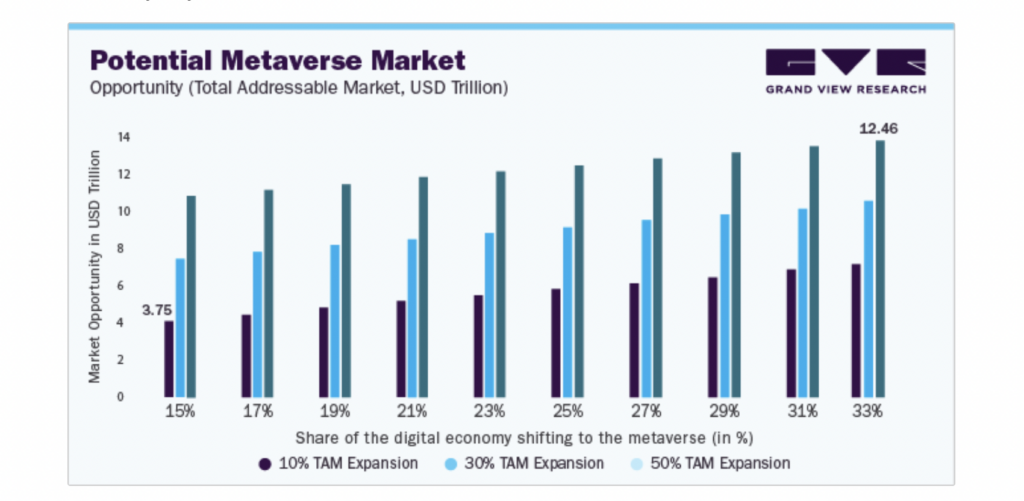“Today, this is the worst our tech will ever be.” – Amy Webb, SXSW 2024: Featured Session: Amy Webb Launches 2024 Emerging Tech Trend Report
The world we interact and engage with, the industries we operate within and the geopolitical space bringing it all together through policy are rapidly changing due to the incredible advancements we’ve witnessed in three major ‘trends,’ each co-evolving with the others in dynamic, uncertain ways.
Those trends are AI, the connected ecosystem of ‘things’ and advancements in biotechnology, says Futurist Amy Webb; and they’re primed to disrupt just about everything. Webb notes that we must think through the implications of riding the wave—while steering it away from something resembling Dystopia.
But we shouldn’t confuse these types of trends with those in fashion, for example; ephemeral blips on the cultural radar (see: Stanley Cups and 90’s fashion anomalies like exposed thongs). The trends described here are—according to Webb—“long-term patterns that indicate a direction of change over time.”
And a lot is changing. Fast.
The queues to get into Webb’s featured panel at SXSW started on the 2nd floor of the Austin Convention Center (note: the panel was on the 4th floor), with some lining up as early as three hours before be the first to hear insights from the Future Today Institute’s 17th edition of its Tech Trends Report, and a deep dive into 16 different reports covering tech, science and industry-focused trends.
As CEO of the Future Today Institute and professor at the NYU Stern School of Business, Webb’s projections are an annual affair that helps us disambiguate the complexities of tech’s impact on society and business. There was even a countdown on The Future Today website, ticking down the minutes until it was published online.
Webb began by addressing what everyone was feeling but couldn’t put into words: Fear, uncertainty and doubt about what she says is the experience of a transitional generation witnessing the convergence of trends from every aspect of human life, influenced by a technology supercycle, or a period of tech expansion with wide-ranging implications.
“At FTI, we’ve been tracking trends in each of these categories: AI, biotech, and the connected ecosystem of things—But what’s interesting is that a couple of years ago, they started converging. Those convergences have created a flywheel of big leaps, AI-enabled tech breakthroughs that were intended for hospitals and sports created a consumer market for things like smartwatches and rings; and once that flywheel got spinning, it created a new value for consumers. It created more practical utility, that led to more funding, which attracted talent.”
The trends have become entangled, cross-sectional and convergent, and we’re all inched up to and peering from the precipice. Especially business leaders, who Webb notes, “are now making decisions out of fear and FOMO” as their scope for planning for these eventualities is shrinking rather than being augmented; it’s hard to augment what’s hard to grasp, after all.
Webb intends to resolve that indecision and FOMO through Strategic Foresight, defined as the “disciplined and systematic approach to identify where to play, how to win in the future, and how to ensure organizational resiliency in the face of unforeseen disruption.”
According to Webb, the motivators for decision makers will need to change if companies want to survive the coming supercycle, primarily used as an economic definition to characterize a period of prolonged economic growth driven by various factors and marked by increased demand for commodities and higher asset prices.
Tech supercycles are similar explosions of growth in society and commerce where tech is the driver; in the past, these were typically brought about by a singular ‘General Purpose Technology,’ far-reaching technological advancements that can transform society radically—think electricity, the internet, and the steam engine.
“This is the most complex operating environment I’ve seen in 20 years of business,” says Webb, a 20-year SXSW attendee and trusted source of things that will come to pass. “The wave of innovation that’s coming is so intense and so pervasive, it will literally reshape human existence…”
As Webb makes clear, this tech supercycle is different than those of the past.
The foundation of it is undoubtedly the General Purpose Technology we lovingly call AI, but interwoven within this paradigm shift are the two other aforementioned GPTs—Connectables and Biotechnology—and some clear nightmare scenarios are apparent.
In Webb’s discussion of the state of AI and where it’s heading, three main core concepts came up: Accountability, Concept to Concrete, and Unsecured AI.
In terms of accountability and AI, Webb notes that there really isn’t any right now. And there probably won’t be in the near future. She points out that ethics teams still aren’t stakeholders and the future path is paved with speed and scale that incentivizes more bias, not less, drawing attention to the fact that text-to-image LLMs (Large Language Models) have had, and continue to have representation issues—either through the erasure of one representation, like female CEOs, or in the opposite direction like racially-swapped founding fathers—an outcome of human interference to avoid the former (known as RLHF-ing, or Reinforcement Learning with Human Feedback).
Drawing on the continuing tendency for AI to do awful things, from Tay to recent issues, Webb says that it’s the incentive to move faster and farther rather than with deliberation that’s leading to these problems. “All those promises of ethics teams and responsible AI resolving issues of bias; it’s still not table stakes. Fixing the problem is challenging and enormous because the models have already been built.”
Her next subtrend, Concept to Concrete, represents a shift from providing AI with instructional prompts for literal answers to conceptual prompts for assisted thinking and moving from LLMs to LAMs (Large Action Models).
This shift means that we won’t be asking for an outcome based on a prompt, but rather, the model itself will predict what to do based on understanding human intention.
Finally, unsecured AI represents the move towards more unrestricted, open models, as opposed to what we currently experience as ‘walled gardens,’ which are limited in their operations but secure. But at a certain point, Webb notes, the closed models will run out of content to train on, while open models pose risks like racist AI, or an AI without ethical mooring.
The future slowdown of AI due to content (ie: training against all available public information on the internet) has a workaround. And it’s clear that to move from LLMs to LAMs, such a move will be necessary to bring us more predictive models that rely on behavioral information–information from us, about our movement, emotions, wants, and needs.
The need to gather more information about our behavior brings us to the next interconnected trend in the supercycle: Connectables or the world of connected devices.
The promise of connectables, says Webb, isn’t that they’ll necessarily make our lives easier: it’s the data that matters and there’s a wealth of it that can be leveraged, especially with AI-first hardware, to learn from us in ways impossible to do with content scraped from our social posts or articles. Webb says that ‘face computers’ like the Apple Vision Pro, in her view, are “designed to read your intentions.” And why wouldn’t a LAM use that data for a more hyper-personalized experience?
“That’s why we are about to be surrounded by millions of sensors that are always on, and always on us. They are around us and can collect multiple streams of data at once. The internet of things, the home of things, smart cars, smart offices, smart apartments… sensors everywhere […] this is the network of interconnected devices that can communicate and exchange data to facilitate and fuel the advancement of artificial intelligence,” explains Webb.
“Data from connectables gives AI the data that it needs, but as we advance all these systems and platforms, they’re becoming a lot more power-hungry. We have heard about semiconductor chip shortages and challenges,” says Webb. Adding to this resource shortage plaguing fabrication are the limitations inherent with the chips themselves and you can extrapolate some interesting conclusions. “Moore’s Law is starting to fail; we’re hitting limits. It may be possible to get smaller and smaller things on the chips, but it’s also getting more and more expensive,” says Webb.
We need limited materials for AI’s advancement that have us, at least currently, stuck. Here’s where biotechnology fits into the equation.
“Biology processes information in a way that silicon can’t. In other words,” says Webb, “if we’re trying to build machines that can think and behave like we do, we literally need to make them more like us.”
The first subtrend of biotechnology, according to Webb, is materials science: AIs are already using the language of biology to make predictions to enable design—for example, EVO, which describes itself as “a long-context biological foundation model based on the StripedHyena architecture that generalizes across the fundamental languages of biology: DNA, RNA, and proteins,” is “capable of both prediction tasks and generative design, from molecular to whole genome scale.”
Webb: “DeepMind built an AI tool, same basic concept: generative biology. It found 2.2 million new materials, 380,000 of them are now in a lab being developed that can potentially power future technologies.” And that’s phenomenal, but as Webb notes, there’s something else at play: “So we can generate new biology, which means new therapeutics, new ways to manage climate change, new ways to deal with the global food shortage… but the question I would ask you is, “does this help our semiconductor chip problem? And that takes me to the final trend.”
“Sometime in the next decade, AI will be working with Organoid Intelligence or OI,” Webb says. “Biotechnology will move us past silicon-based computing systems,” by becoming faster, more efficient, and more powerful. It sounds like science fiction, but Organoid Intelligence is already here: researchers are using biological materials like brain cells for information processing from teaching a biocomputer to play Pong to training it to detect a specific voice among many.
So what does this mean for the future? What scenarios can we predict from the symbiotic progress between AI, connectables and biotechnology?
In listening to Webb, it’s easy to draw a comparison to ‘Black Mirror.’ For AI, Webb asks us to consider whether an open AI model in the hands of bad actors—or maybe even unprompted—could create a deep-fake conflict with global impact, even causing the next World War. For connectables, what if our feedback becomes so hyper-personalized that it feeds into a social credit system and limits individual freedom based on our self-reporting? Or does our work for us, but produces hallucinatory results in the process? For Organoid Intelligence, there are concerns about where we are getting the stem cells to build biocomputers; will they be ethically sourced? Or will they be developed in Special Economic Zones where international law doesn’t apply and the regulations around biotech experimentation are unregulated?
“Tech isn’t bad or good,” says Webb. So why highlight the most catastrophic scenarios of our current tech supercycle? “Without intervention, that is what I see coming at us.”
Watch a full VOD of the SXSW panel and read the full Tech Trends Report courtesy of Future Today Institute.
